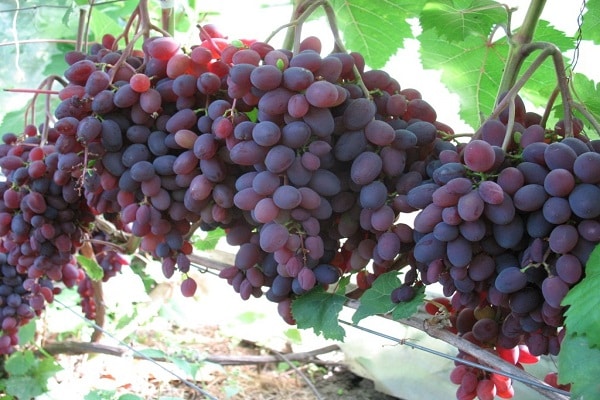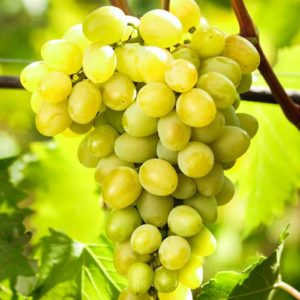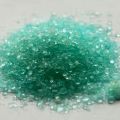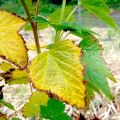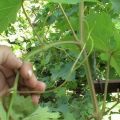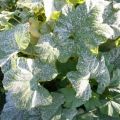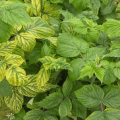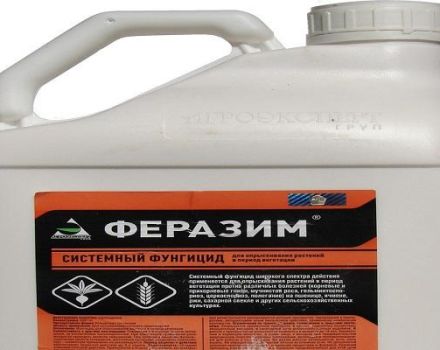How to treat chlorosis on grapes with iron vitriol, what to do and how to process
Grape varieties of different varieties can be resistant to fungal or infectious diseases. Lack of nutrients in the soil, sunny days, high humidity, fungal infections become the causes of chlorosis of grapes. It can be infectious and non-infectious; the method of combating the malaise of the fruit crop depends on the cause of its occurrence.
What is chlorosis
Chlorosis of grape leaves manifests itself in the loss of chlorophyll - the leaves become translucent, discolored or become yellow in color. This phenomenon is caused by a decrease in plant photosynthesis. The lemon yellow hue in this plant disease is characteristic of both the foliage and the vine.

What is dangerous
When selecting seedlings of grape varieties that have weak immunity to yellow mosaic and common fungal and viral diseases, with the onset of even non-infectious chlorosis, the entire bush may die.
For disease-resistant shoots, severe chlorotic damage threatens:
- discoloration or discoloration of leaves;
- drying of the tops of the shoots;
- lack of fruit.
For your information! With repeated treatments of plants with chemical compositions with a high content of microelements, the yield of plants affected by chlorosis of grapes will be lost or reduced due to crushing of the berries and their shedding.
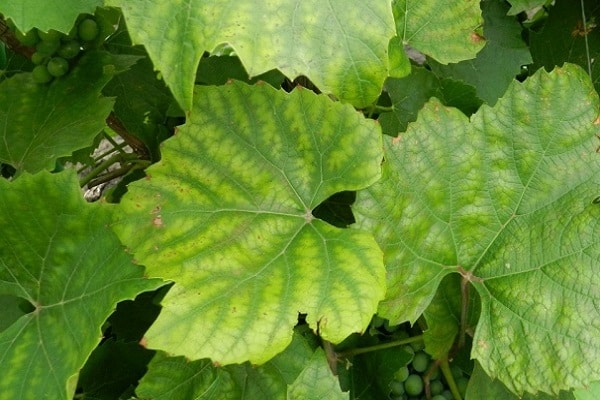
Types of disease
Purely schematically, chlorosis can be divided into three types:
- non-infectious, caused by iron deficiency;
- infectious, it is provoked by the yellow mosaic virus;
- edaphic, associated with soil quality.
There are slightly more chlorosis subspecies due to the different chemical composition of the soils on which the grape seedlings are planted, the climatic conditions of the regions where the vine grows.
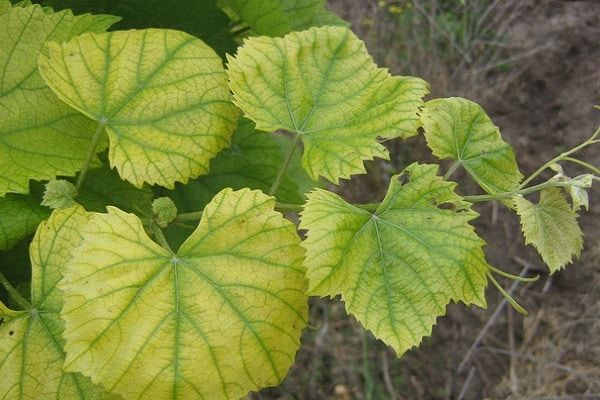
Non-infectious
Non-infectious chlorosis is not associated with pathogens, it is caused by external adverse factors:
- high soil moisture;
- prolonged rains, high rainfall;
- imbalance in the chemical (mineral) composition of the soil.
Non-infectious chlorosis of grapes is diagnosed by the initial stage of leaf color change. The first yellowness appears at the edges, gradually spreading to the veins; they are the last to lose their initial color.
Types of non-infectious chlorosis:
- nitric;
- iron;
- carbonate;
- magnesium;
- sulfuric.
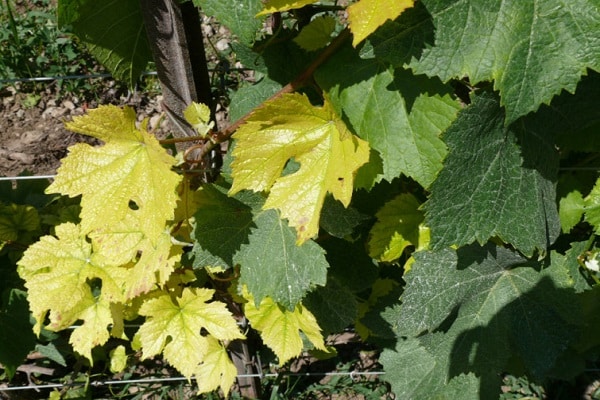
How to distinguish non-infectious chlorosis from infectious
For the diagnosis of non-infectious chlorosis, iron chelate is used as a tester.It is applied to the affected sheet in a strip. A change in color within 24 hours - the return of the green color scheme in the treated area, indicates that the form of the disease is non-infectious.
Infectious
Infectious chlorosis develops against the background of a viral disease. Most often it is a yellow mosaic, panashur, variegation, but other fungal infections of the vine can lead to chlorosis.
Leaf color change in the infectious form of the disease of the grape bush begins with veins (in the direction from small to large). The last to turn yellow or discolor are the areas that are most distant from the veins. The leaves of old shoots are the first to undergo infectious chlorosis, and the disease gradually passes to young ones.
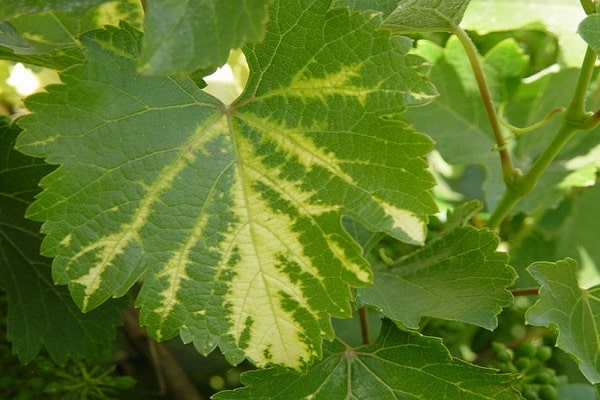
During the flowering period of grapes on infected plants, the color of the leaves is restored. The shape and size of berries, bunches, respectively, differs from those that are typical for a healthy plant of this variety.
Infectious chlorosis of the vine is not cured. The infected vineyard is to be destroyed. Seedlings after grafting are in the high-risk zone.
For your information! Grape varieties growing in the European part without rootstock are not susceptible to infectious chlorosis.
Edaphic
A bush disease caused by unfavorable conditions associated with the soil - excessive moisture, lack of minerals and other nutrients, blocking them from the roots of seedlings with dense layers of soil is called edaphic chlorosis.
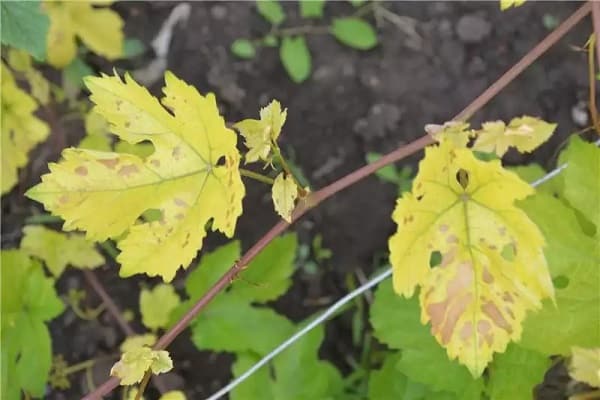
An excess of lime in the soil is associated with a lack of iron, which causes the same symptoms of plant disease. The carbonate type of chlorosis also belongs to the edaphic category.
Reference! Edaphos - soil (translated from Greek). Edaphic - referring to the soil, generated by it or due to its influence.
Carbonate
The carbonate form of the disease is often called iron chlorosis, the deficiency of the Fe element is caused by the disease. This subspecies of non-infectious lesions are more susceptible to high yields and red-fruited varieties. For their high-quality fruiting, easily digestible forms of iron are required.
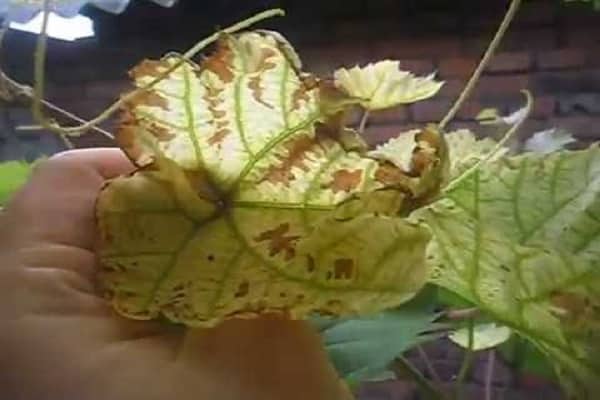
Excessive carbonate content of the soil is caused by natural factors:
- alkalization of the soil;
- close occurrence to the surface of the aquifer;
- high salt content;
- mixing the humus layer with others;
- density.
All these factors contribute to the imbalance of mineral nutrition, redox regime and water-air balance.
An imbalance of minerals supplied for plant nutrition is most often observed in humus soils, calcareous soils formed in the process of destruction of lime rocks and marls.
There is enough iron in these soils, but lime blocks the movement of ions of zinc, boron, manganese in the direction of the root system of plants. Nutrients remain out of reach.
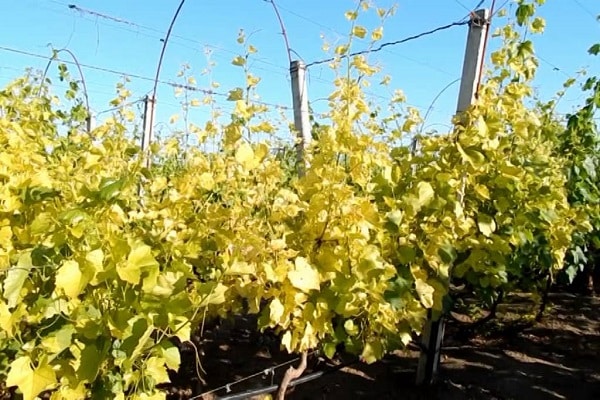
Causes and signs of the disease
Iron chlorosis can be diagnosed by the depletion of vines and shoots, which is due to the lack of one or more nutrients.
With a lack of bromine, the following symptoms are characteristic:
- Spots with low chlorophyll content appear simultaneously on the entire leaf surface.
- The cloves of the leaves dry out, crumble.
- Flowers fall without opening.
- Necrotic plaques appear on the berries,
- Fruits do not reach normal size.
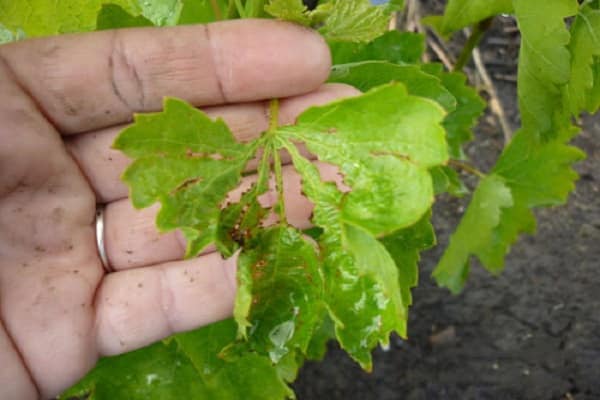
Zinc deficiency manifests itself in insufficient development of petioles and leaf blades. The leaves of the upper shoots are covered with light green spots. Loose, light soils of the carbonate type are mainly characterized by a lack of zinc.
Lack of manganese is diagnosed at the beginning of yellowing of the leaves with a toothed - extreme part, while the leaf zones adjacent to the veins remain green.
The most common nitrogen deficiency for the development of vineyards is observed on all types of soil during prolonged rains, which wash out the useful element from the soil. This is a seasonal phenomenon. When planting vines in light sandy soils, nitrogen starvation of shoots causes the following reasons:
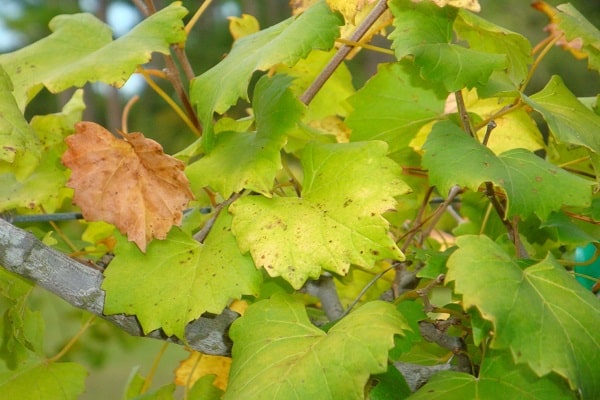
- Stable cold days during the growing season of the plant.
- Excessive mulching with straw or sawdust.
- Lack of moisture - prolonged dry period.
Magnesium deficiency is observed in grapes growing on sandy and acidic soils, which is caused by an excess of bromine, potassium, sodium. These chemical elements block magnesium ions, preventing them from reaching the plant roots.
The rarest of chlorosis is sulfuric. It most commonly affects vineyards planted in areas with low organic nutrient content. Chlorosis is caused by phosphorus-nitrogen fertilizers used with a clear excess of the recommended norms.
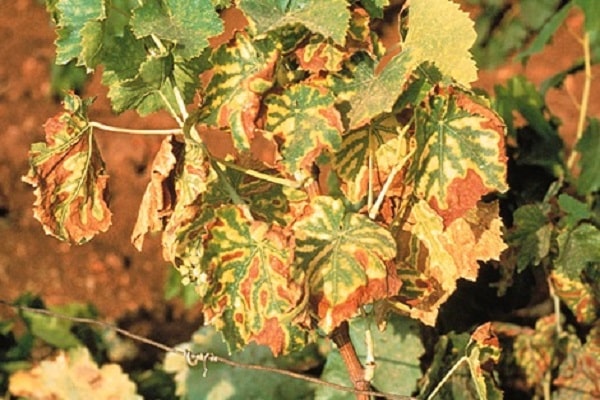
Chlorosis control methods
Annual feeding is essential for the vineyard. Every professional grower knows how to treat chlorosis before its first manifestations based on a visual analysis of the soil. To prevent diseases associated with a lack of nutrients, root feeding is used, carried out in the spring before flowering, and foliar, which is carried out in the fall.
Fertilizers to increase nitrogen levels:
- Urea is introduced in liquid form, it is well absorbed. As the main root dressing, it is applied in the spring. In autumn, the vine is sprayed with a liquid solution of urea after harvesting.
- Ammonium nitrate - ammonium nitrate completely dissolves in water, saturates the soil with easily assimilated nitrogen. In spring it is introduced as a root top dressing, in autumn as a foliar application.
- Ammonium sulphate is recommended for application to soil with a high degree of moisture. This drug is practically not washed out of the soil by melt and rainwater.
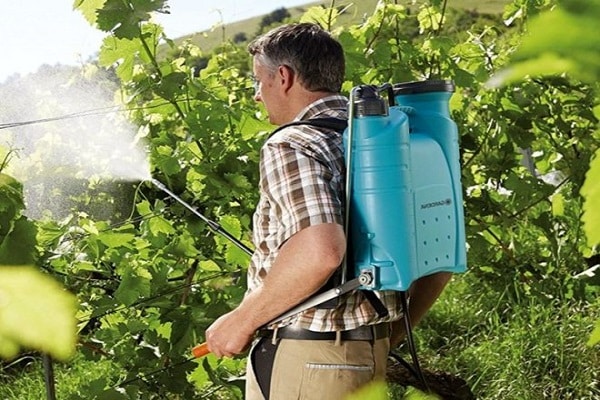
Superphosphates increase the level of phosphorus in soils:
- Simple is intended for all types of soil. The fertilizer contains gypsum - a source of sulfur.
- Double - a concentrated product, its dosage in solution is three times less than a simple one.
To increase potassium levels, do:
- Potassium chloride. An exception is acidic soils.
- Potassium salt. High content of chlorine-containing substances. Used only in late autumn.
- Potassium sulfate shows the highest efficiency indicators when enriching light soils.
Combined fertilizers to saturate the soil with nitrogen, phosphorus, potassium:

- "Nitrofoska".
- "Nitroammophos".
- "Azofoska".
What to do with chlorotic vines if a disease is found after the flowering period? The answer to this question is ambiguous. If the disease is caused by an infection, then the leaves and vine should be treated with fungicides.
The following are universal in the fight against yellow mosaic, anthracnose, mildew and powdery mildew:
- Bordeaux mixture.
- Inkstone.
- Colloidal sulfur.
- Lime-sulfuric infusion.
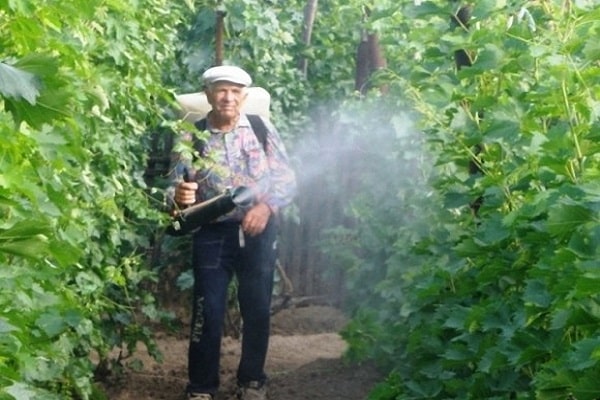
The use of these funds is recommended when the first signs of chlorosis are detected, they are applied to the entire surface of the bush - vine, leaves. They also spray a plot of land adjacent to the grape bush.
Preparations for non-infectious chlorosis are the same as those recommended for prophylactic treatment, only the dosage of active substances in the solution is greater. The fight against chlorosis of this type will be intense - from early spring to the middle of the growing season. This is the only way to save the vineyard from death and return its yield by the next season. This season, alas, it will not be possible to get a full harvest.
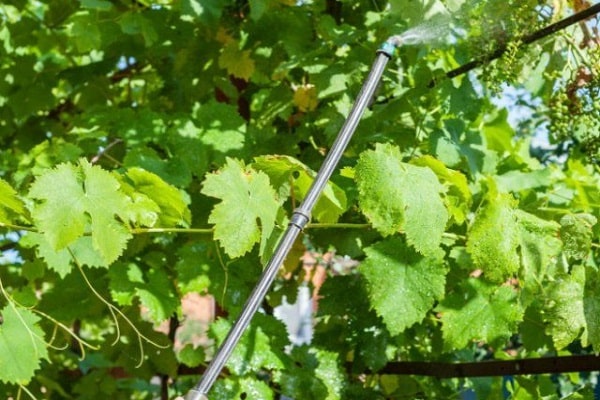
The use of iron sulfate for the treatment of grapes
Insecticide, fungicide - iron sulfate does not pose a danger to plants, animals, humans. Used ferrous sulfate, ferrous sulfate (FeSO4), for disinfection, plant treatment and as fertilizer.It effectively fights against chlorosis of a non-infectious nature, but is practically useless for an infectious form of the disease.
For each particular case of plant damage, there are recommendations on how to prepare a composition for treatment in order to avoid burns to foliage and shoots. The multifunctionality of the drug lies in the fact that it is used for:
- preventive seasonal treatment;
- in the fight against insect pests and their larvae;
- treatment of fungal infections;
- accelerating the tightening of standard damage;
- enrichment of the soil with iron;
- processing storage.
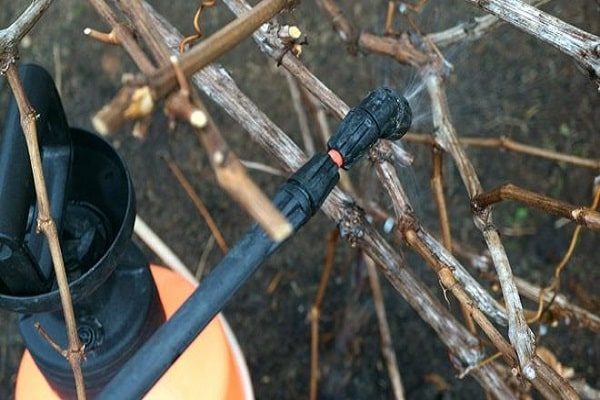
Ferrous sulfate has several disadvantages. They are expressed as follows:
- When processing plants in spring, young leaves and shoots can receive not only help in the fight against chlorosis and pests, but also burns.
- The agent does not penetrate deeply into the tissues, the fight against fungal infections is superficial.
- The disinfecting effect lasts no more than 14 days, which implies in the summer the treatment of shoots affected by the fungus should be carried out with an interval of 10-14 days.
Advice how process grapes with iron vitriol in spring:
- The first treatment-and-prophylactic spraying is carried out in the period between the onset of stable positive temperatures until the leaves appear.
- The concentration of the fertilizing agent is less (10-20 g per 10 l of water), respectively, the processing time increases from the moment the snow melts to the appearance of 4-5 leaves on the shoot. Processing is carried out in calm dry weather.
- The introduction of a 0.5% solution into the soil is carried out during digging. The recommended rate is 100 g for each 1m2.
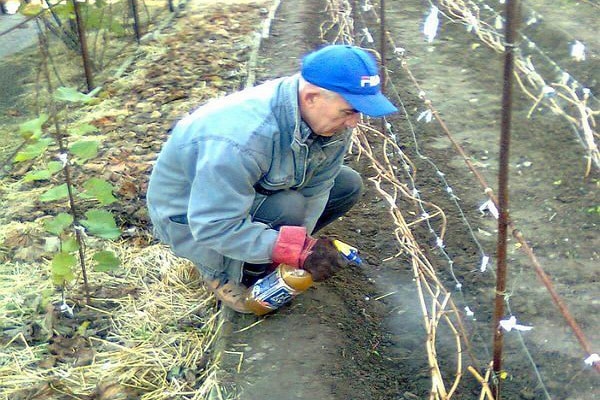
How to prepare ferrous sulfate solution
To obtain a solution with a strength of 0.5%, you need to dissolve 50 g of concentrated fertilizer crystals in 10 liters of water. Dissolve the drug in cold water heated in the sun. If this rule is followed, the characteristics of the fertilizer will not deteriorate, and a cold shower will not shock the plant. Grapes do not tolerate cold watering.
For your information: With a strong lack of iron, which caused chlorosis of grapes, the concentration of the iron sulfate solution also increases to 0.5%.
The composition, prepared in this proportion, can be used for spraying, which will protect the grapes from infection with diseases of nearby fruit trees and their parasites.
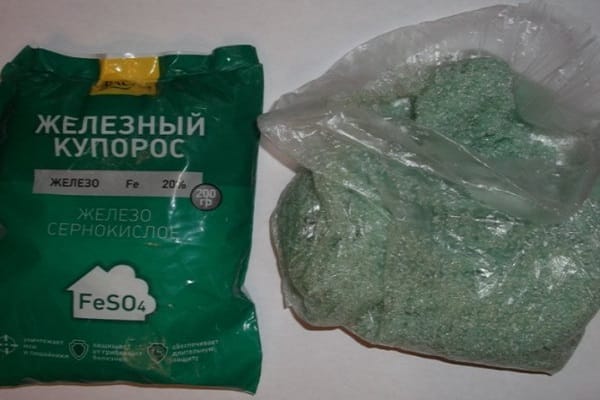
Autumn processing with iron vitriol
In anticipation of winter, grape bushes are also processed with iron sulfate. This is a necessary measure of protection against cold weather, temperature changes. The high concentration of ferrous sulfate provides a reliable covering of the plant with a protective film, which prevents not only freezing of the bush, but also the penetration of pests and fungi into it.
After the vegetative period until mid-November, spraying is carried out with a solution made in a proportion of 500 g of fertilizer per 10 liters of water. This is the norm for an adult plant.
For seedlings, the fertilization rate is reduced to 300 g FeSO4. The same solution that is prepared for the treatment of the vine is used for the treatment of the adjacent plot of land.
Attention! Before the autumn spraying, the foliage remaining on the branches is pruned and removed. This increases the efficiency of processing each branch.

Prevention
Preventive work to restore vines affected by chlorosis in the previous season:
- While the buds are in a state of sleep, the bushes are sprayed with copper sulfate or Bordeaux mixture. Root top dressing - mineral fertilizers.
- After opening the buds, empty shoots are removed, nitrogen-containing compounds are introduced.
- At the stage of development of shoots, treatment is carried out with a weak solution of Bordeaux mixture and lime sulfur with foliar dressing with mineral fertilizers.
- At the stage of ovary formation, spraying with solutions of colloidal sulfur and copper sulfate is carried out.
- The next processing, repeating the previous one, will come only after harvesting and thinning the bushes.
The protection of the vineyard, for which the area with calcareous soil is set aside, begins with the selection of seedlings that can withstand the complexity of the soil.
For your information. Parsley is not tolerated by pests of grapes, this is the most favorable neighborhood.
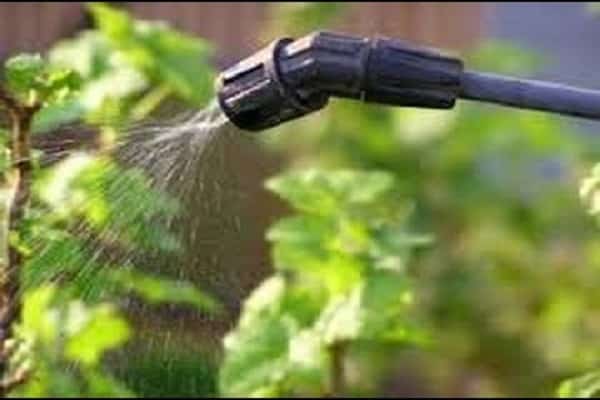
Resistant varieties
Breeders are constantly improving the quality of the vine, using different combinations of rootstocks and scions, but no one has yet managed to achieve 100% resistance to chlorosis. To date, varieties are highly resistant to the disease:
- Alex;
- Venus;
- Delight;
- Zaporozhye raisins;
- Pink Timur;
- Talisman East;
To minimize the risk of chlorosis affecting grapes, one should take a comprehensive approach to plant protection, without neglecting any of the stages of spring and autumn spraying and dressing.
